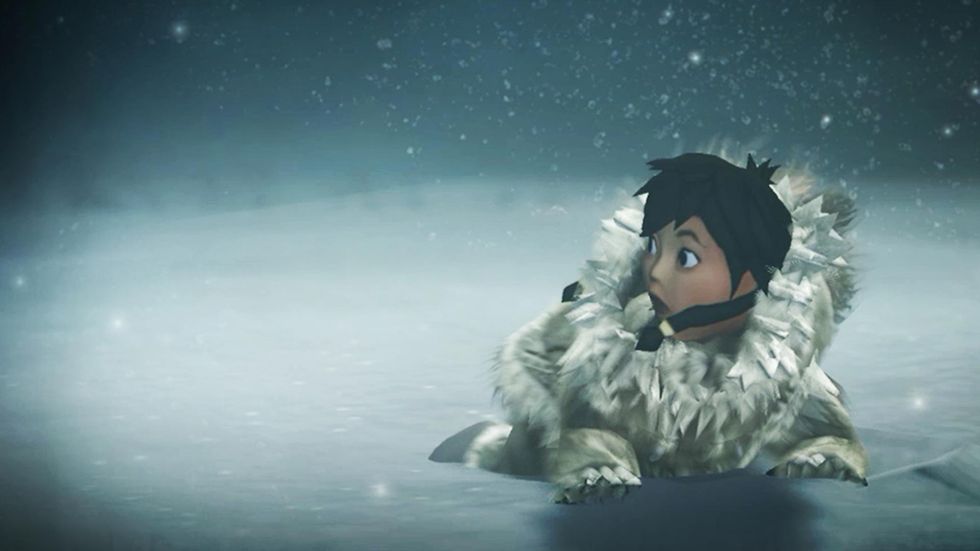Never Alone is a collaboration between game makers E-Line Media and Upper One Games and Alaskan Native storytellers and elders that takes a classic, oral story passed down from storyteller to storyteller and brings it to the screens as a side-scrolling puzzle game.
Within the game, whichever platform chosen, the game can host two players or a single lone player. A lone player will have the freedom to swap between Nuna, a headstrong Iñupiat girl, and Fox, her aptly named arctic fox companion to utilize their different skills as they traverse the Alaskan wilderness to find the source of eternal blizzards that plague her village. The game is a series of puzzles to be solved and challenges to overcome as a narrator speaks the traditional Iñupiat language with English captions of the tale.
The actual mechanics to solve tough puzzles are massively flawed. According to rumor, the console version is a bit easier to play and much more so with a partner, but playing alone on a tablet or computer is a legendary tale of frustration. However, there’s much more to Never Alone than the game itself.
Within the game, the art style is brought to life by Dima Veryovka based on the styles of the Iñupiat people’s own art. In an interview, he talked about all the work that went into depicting this culture accurately in the art for the game. Preparing for the game, he used art books and galleries alike including the Anchorage Art museum where they were able to see authentic art, tools, and clothing of the Alaskan Natives.
The lead game designer, Grant Roberts, lead of a team of six total, sang the same song about the collaborative, respectful process of the game development. Specifically, he met with Ron Brower, an elder, to take notes on the stories and history through the present of their people.
Along every step of the way, from the game’s original, conceptual inception when Iñupiat wanted a way to connect their youth to their culture in changing times through to updates and a sequel Foxtales that depicts another story of lore, to goal has been to respect, understand, and accurately represent an underappreciated culture.
This collaboration and goal of this game is unlike the large majority of games we see today meant to entertain without regard for representation, morals, or respect- which is great fun, but a game like this is few and far between and it’s important.



















